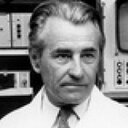Sleep apnoea inducing hypoxemia is associated with early signs of carotid atherosclerosis in males.
Palavras-chave
Resumo
The intima-media thickness (IMT) of carotid arteries as a marker of preclinical atherosclerosis was measured by ultrasonography in 49 subjects to determine, how strongly the obstructive sleep apnoea (OSA) syndrome is associated with atherosclerosis. Maximal IMT was higher in patients with cardiovascular diseases and with or without risk factors of atherosclerosis, presenting also OSA (apnoea-hypopnoea index=26.1+/-15.6/h) compared to controls without OSA (0.91+/-0.21 mm versus 0.77+/-0.18 mm, p<0.05). The prevalence of IMT > or = 0.85 mm was also higher in patients with cardiovascular pathology presenting OSA than without it (p<0.05). IMT(max) was increased in subjects with mild to moderate OSA alone (AHI=20.4+/-8.7/h) versus healthy controls (0.83+/-0.14 mm versus 0.63+/-0.08 mm, p<0.01). Regression analysis revealed a correlation of IMT(max) with the frequency, intensity and duration of intermittent hypoxemia reflected by AHI (p<0.01), minimal oxygen saturation (p<0.01) and time spent with Sa(O2) < 90% (p<0.05) in patients presenting OSA. The results indicate clear association between early signs of carotid atherosclerosis and moderate OSA in males with and without concomitant cardiovascular pathology.


